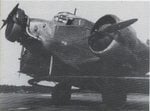Velius
Airman 1st Class
Hey,
I've read in a few of my books about modifications done on certain aircraft where a circular de-gaussing ring was mounted on the airframe for mine warfare. Cables inside the ring would carry a high current to create a strong magnetic feild to explode magnetic mines during low fly-bys. So far, I've found such modifications were done on some PBY-4 and PBY-5's and on MS (Minensuche) BV-138.
Was this kind of warfare used often in WWII? What are "magnetic mines" and where where they usually deployed? What other information can y'all tell me? Any help is appereciated 8)
I've read in a few of my books about modifications done on certain aircraft where a circular de-gaussing ring was mounted on the airframe for mine warfare. Cables inside the ring would carry a high current to create a strong magnetic feild to explode magnetic mines during low fly-bys. So far, I've found such modifications were done on some PBY-4 and PBY-5's and on MS (Minensuche) BV-138.
Was this kind of warfare used often in WWII? What are "magnetic mines" and where where they usually deployed? What other information can y'all tell me? Any help is appereciated 8)



